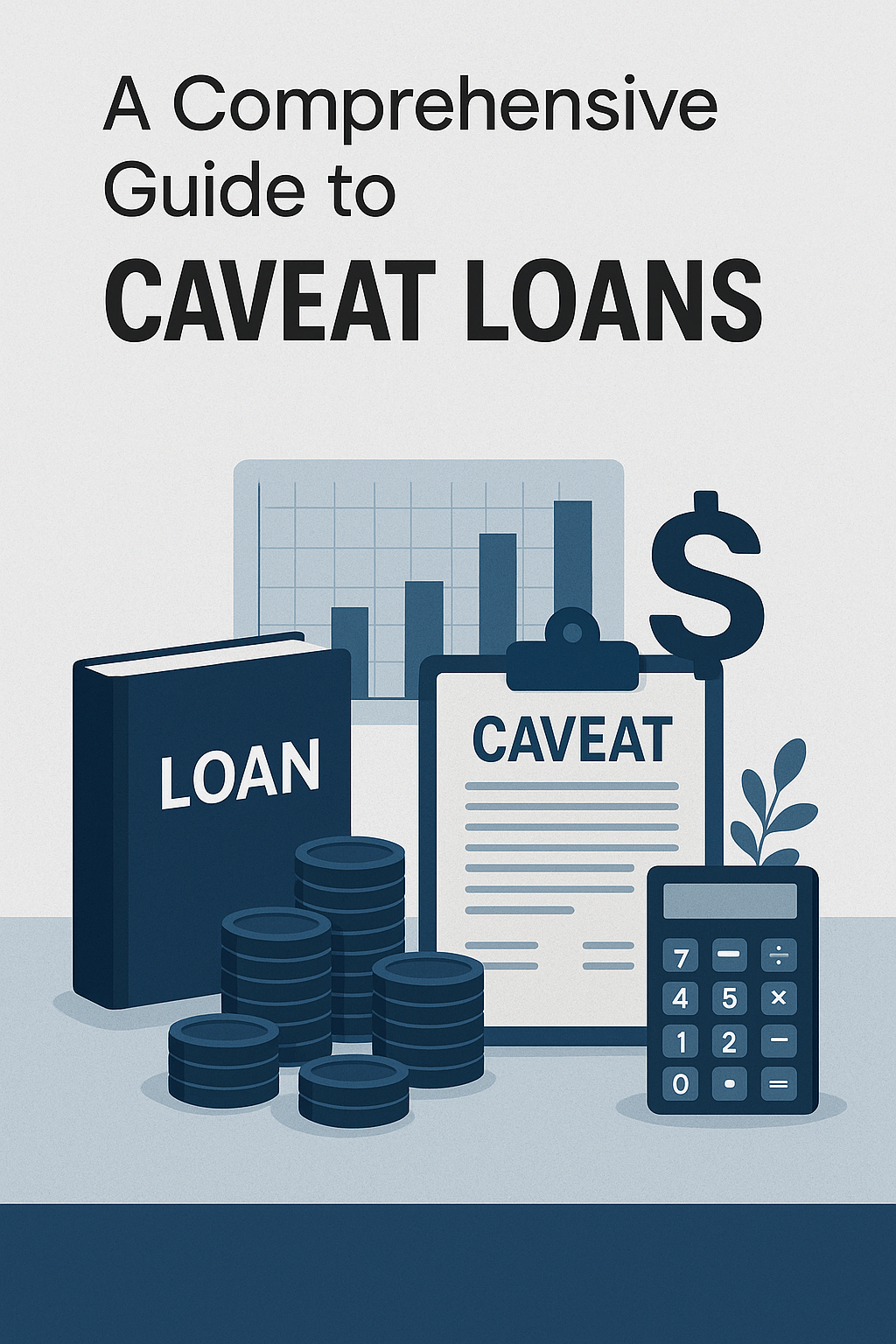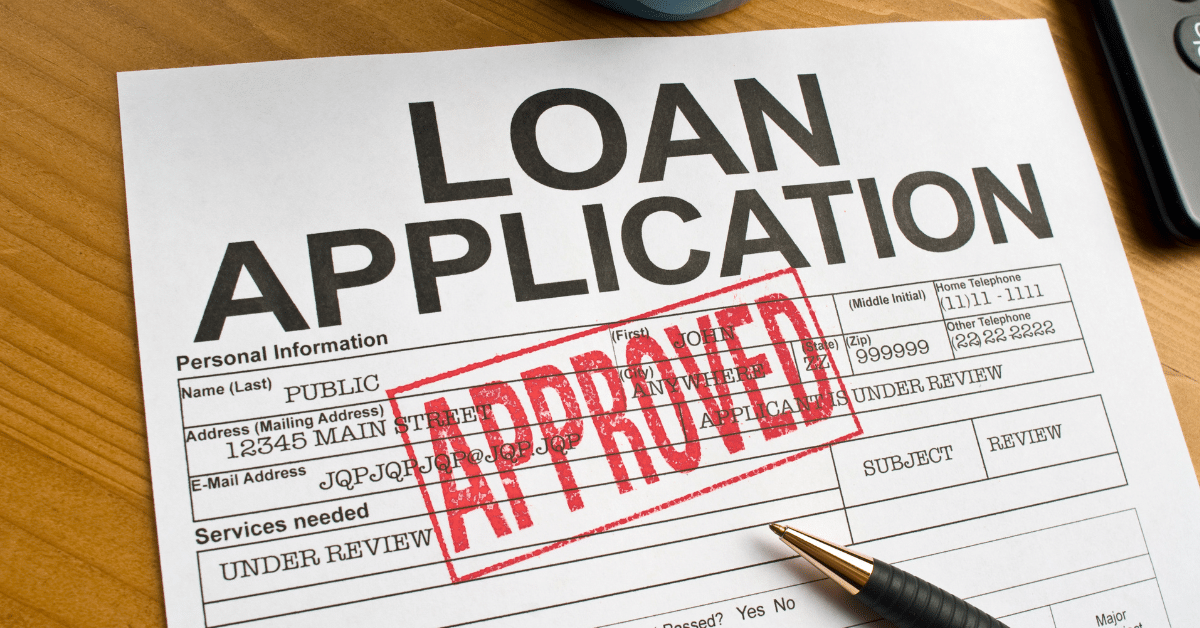Navigating the world of startup financing can be challenging, especially for entrepreneurs seeking fast funding solutions to kickstart their ventures.
Caveat loans have emerged as a popular alternative funding option, offering a lifeline for those needing quick access to capital without the lengthy approval processes of traditional loans.
In this guide, we’ll explore the ins and outs of caveat loans, highlighting their benefits and how they can serve as a flexible solution for startup founders.
From understanding the mechanics of caveat loans to evaluating if they fit your startup loan options, this resource is crafted to empower you with the knowledge to make informed financial decisions.
Whether you’re a seasoned entrepreneur or just starting your journey, the insights provided here will support your business growth with confidence.
Note: You can get your free PDF guide on tips for getting a business loan below.
Understanding Caveat Loans
Caveat loans are a unique financing option that can provide quick capital for startups. This section will explore the fundamentals of caveat loans, their mechanics, and key features to help you grasp this alternative funding solution.
What Are Caveat Loans?
Caveat loans are a type of secured loan where the borrower uses a property as collateral. The term “caveat” refers to a legal notice placed on the property title, indicating the lender’s interest.
These loans are often used by businesses needing fast access to funds, making them popular among startups and entrepreneurs. Caveat loans typically offer shorter terms and higher interest rates compared to traditional loans.
Unlike mortgages, caveat loans don’t transfer property ownership to the lender. Instead, they place a legal claim on the property, which can be enforced if the borrower defaults on the loan.

How Caveat Loans Work
Caveat loans function by using property as security for the loan amount. The process typically follows these steps:
-
The borrower applies for a caveat loan, offering a property as collateral.
-
The lender assesses the property value and the borrower’s ability to repay.
-
If approved, the lender places a caveat on the property title.
-
Funds are released to the borrower, often within a few days.
The caveat remains on the property title until the loan is repaid in full. This security allows lenders to offer faster approval times and more flexible terms.
During the loan term, the borrower retains ownership and use of the property. However, they can’t sell or refinance the property without the lender’s consent.
Key Features and Terms
Caveat loans come with several distinctive features that set them apart from other financing options:
Short-term nature: Most caveat loans have terms ranging from a few months to a couple of years, suitable for businesses needing temporary capital injections.
Higher interest rates: Due to their short-term nature and quick approval process, caveat loans often carry higher interest rates than traditional bank loans.
Flexible repayment options: Many lenders offer interest-only payments or balloon payments at the end of the term, providing cash flow flexibility for startups.
Quick approval and funding: Caveat loans can often be approved and funded within days, making them ideal for time-sensitive opportunities.
Limited credit checks: Lenders focus more on the property value than the borrower’s credit history, opening up options for those with less-than-perfect credit.
Benefits of Caveat Loans for Startups
Caveat loans offer several advantages that make them an attractive option for startups seeking quick and flexible financing. This section will explore the key benefits that caveat loans can provide to growing businesses.
Fast Funding Solutions
Caveat loans excel in providing rapid access to capital, a crucial factor for many startups facing time-sensitive opportunities or challenges.
The streamlined application process for caveat loans often results in approval within 24 to 48 hours. This quick turnaround can be vital for startups needing to seize market opportunities or address urgent financial needs.
Unlike traditional loans that may take weeks or months to process, caveat loans can often be funded within a few days of approval. This speed allows startups to act swiftly on business decisions without being held back by lengthy financing procedures.
Flexible Repayment Options
Caveat loans typically offer more flexible repayment terms compared to traditional loans, which can be beneficial for startups managing cash flow:
-
Interest-only payments: Many lenders allow borrowers to make interest-only payments for a set period, reducing the initial financial burden.
-
Balloon payments: Some caveat loans offer the option to make a large payment at the end of the loan term, allowing businesses to defer a significant portion of the repayment.
-
Customized schedules: Lenders may work with borrowers to create repayment schedules that align with the business’s cash flow patterns.
This flexibility can help startups manage their finances more effectively during critical growth phases.
Caveat Loan Benefits for Growth
Caveat loans can provide several growth-oriented benefits for startups:
Quick capital for expansion: The fast funding process allows startups to quickly capitalize on growth opportunities, such as expanding product lines or entering new markets.
Bridging financial gaps: Caveat loans can serve as a bridge between funding rounds or during seasonal cash flow fluctuations, helping maintain business momentum.
Asset leverage: By using existing assets as collateral, startups can access larger loan amounts without diluting ownership through equity financing.
These benefits make caveat loans a valuable tool for startups looking to fuel their growth strategies and navigate the challenges of scaling a business.
Comparing Startup Financing Options
Understanding how caveat loans stack up against other financing options is crucial for making informed decisions. This section will compare caveat loans with traditional loans and explore alternative funding sources for startups.
Alternative Funding for Startups
Beyond caveats and traditional loans, startups have several other funding options to consider:
Venture capital: Involves selling equity to investors in exchange for funding and expertise. Suitable for high-growth startups with scalable business models.
Angel investors: Individual investors who provide capital in exchange for equity. Often more accessible than venture capital for early-stage startups.
Crowdfunding: Raises small amounts from a large number of people, often through online platforms. Can be reward-based or equity-based.
Government grants: Non-repayable funds provided by government agencies to support specific industries or innovation. Highly competitive but can provide significant capital without diluting ownership.
Each option has its own set of pros and cons, and the best choice depends on your startup’s specific needs, growth stage, and long-term goals.
Startup Loan Options Overview
When considering loan options for your startup, it’s essential to evaluate a range of choices:
-
Business lines of credit: Provide flexible access to funds as needed, with interest charged only on the amount used.
-
SBA loans: Government-backed loans with favorable terms, but they often have a lengthy application process.
-
Equipment financing: Loans specifically for purchasing business equipment, using the equipment itself as collateral.
-
Invoice financing: Allows businesses to borrow against unpaid invoices, improving cash flow.
-
Merchant cash advances: Provide upfront cash in exchange for a portion of future credit card sales.
Each option caters to different business needs and situations. Startups should carefully consider their financial requirements, repayment ability, and growth plans when choosing the most suitable loan option.
How to Apply for a Caveat Loan
Securing a caveat loan requires careful preparation and consideration. This section will guide you through the application process, help you choose the right lender, and highlight common pitfalls to avoid.
Preparing Your Application
A well-prepared caveat loan application can increase your chances of approval and potentially secure better terms. Follow these steps:
-
Gather necessary documents:
-
Property details and valuation
-
Business financial statements
-
Cash flow projections
-
Business plan
-
-
Calculate your loan requirements:
-
Determine the exact amount you need
-
Consider potential interest rates and fees
-
-
Assess your repayment capacity:
-
Review your cash flow
-
Ensure you can meet repayment obligations
-
-
Prepare a clear purpose statement:
-
Outline how you’ll use the funds
-
Explain how it will benefit your business
-
A thorough and well-organized application demonstrates your professionalism and can instill confidence in potential lenders.
Choosing the Right Lender
Selecting the appropriate lender for your caveat loan is crucial. Consider these factors:
Interest rates and fees: Compare rates and fee structures among different lenders. Remember that the lowest rate isn’t always the best deal if it comes with unfavorable terms.
Loan terms and flexibility: Look for lenders offering terms that align with your business needs, such as flexible repayment options or the ability to repay early without penalties.
Reputation and experience: Research lenders’ track records, particularly their experience with startups and your industry. Check reviews and ask for references if possible.
Customer service: Good communication and support can be invaluable, especially for first-time borrowers. Test their responsiveness and willingness to answer questions.
Approval speed: If quick funding is crucial, prioritize lenders known for fast approvals and disbursements.
Common Pitfalls to Avoid
When applying for a caveat loan, be aware of these potential pitfalls:
-
Overestimating property value: Be realistic about your property’s worth to avoid disappointment or unfavorable loan terms.
-
Underestimating total costs: Factor in all fees, not just the interest rate, when calculating the actual cost of the loan.
-
Ignoring the fine print: Carefully read and understand all loan terms, including default conditions and any restrictions on property use.
-
Borrowing more than needed: Only borrow what you require to avoid unnecessary debt and higher repayment obligations.
-
Neglecting exit strategy: Have a clear plan for repaying the loan, including contingencies if your business faces challenges.
By avoiding these common mistakes, you can increase your chances of a successful caveat loan experience that supports your startup’s growth.
Case Studies and Success Stories
Real-world examples can provide valuable insights into how caveat loans have helped startups overcome challenges and achieve growth. This section presents case studies and lessons learned from successful startup founders.
Real-World Examples of Success
Tech Startup Expansion
A software startup used a caveat loan to fund a critical expansion:
-
Borrowed $500,000 against company-owned property
-
Used funds to hire key developers and launch a new product
-
Repaid the loan within 18 months from increased revenue
-
Achieved 300% growth in user base
Key takeaway: The quick funding allowed the company to capitalize on a market opportunity without diluting ownership.
E-commerce Inventory Boost:
An online retailer leveraged a caveat loan to manage seasonal demand:
-
Secured $200,000 loan against the founder’s property
-
Invested in inventory before the peak holiday season
-
Increased sales by 150% year-over-year
-
Repaid loan early, saving on interest
Lesson learned: Timely access to capital can be crucial for managing seasonal business fluctuations.
Manufacturing Equipment Upgrade
A small manufacturing firm used a caveat loan to modernize operations:
-
Obtained $750,000 loan using factory as collateral
-
Purchased advanced machinery to increase production efficiency
-
Reduced production costs by 30%
-
Expanded client base, leading to 50% revenue growth
Insight: Strategic use of caveat loans can fund transformative investments that drive long-term growth.
Lessons Learned from Startup Founders
Successful entrepreneurs who have used caveat loans share these key insights:
-
Clarity of purpose: Have a clear, specific plan for how you’ll use the funds and how it will benefit your business.
-
Risk assessment: Carefully evaluate the risks of using property as collateral against the potential business benefits.
-
Timing is crucial: Use caveat loans for time-sensitive opportunities where traditional financing would be too slow.
-
Negotiate terms: Don’t accept the first offer. Shop around and negotiate for the best possible terms.
-
Repayment plan: Have a solid strategy for repaying the loan, including contingency plans.
-
Use as part of a broader strategy: Integrate caveat loans into your overall financial plan, not as a standalone solution.
These lessons emphasize the importance of strategic planning and careful consideration when using caveat loans to fuel startup growth.




